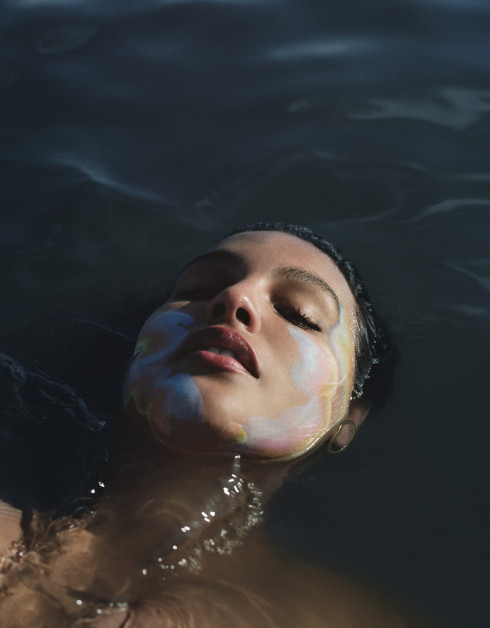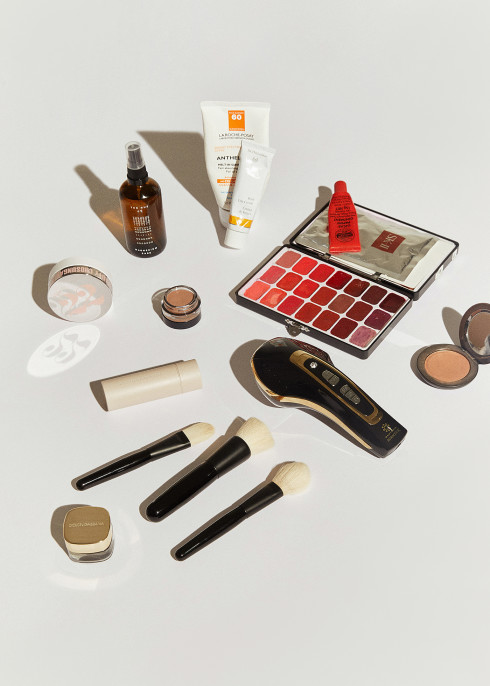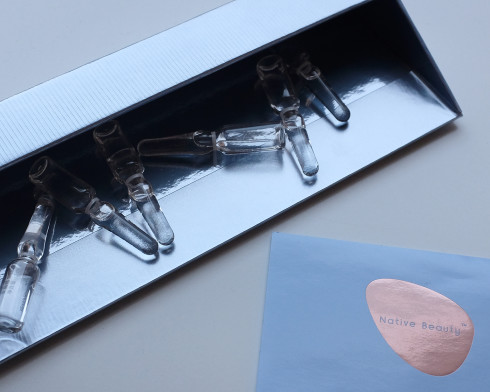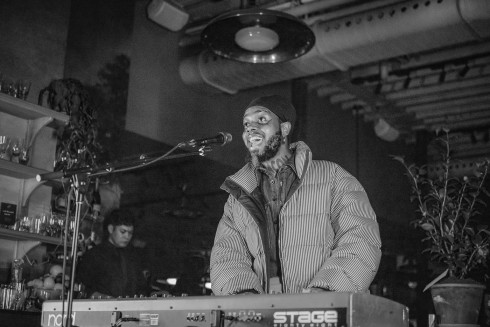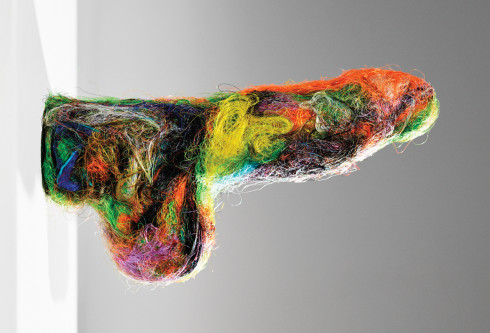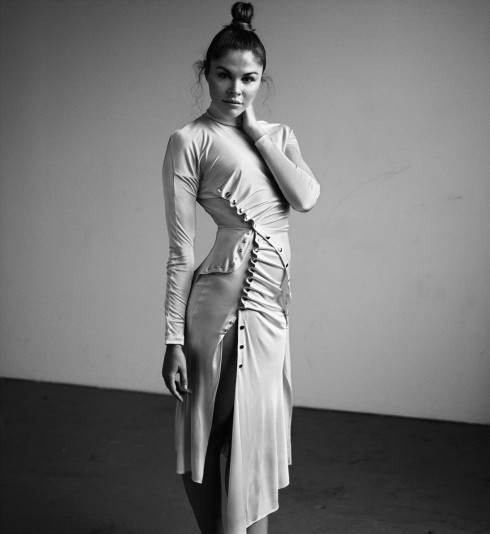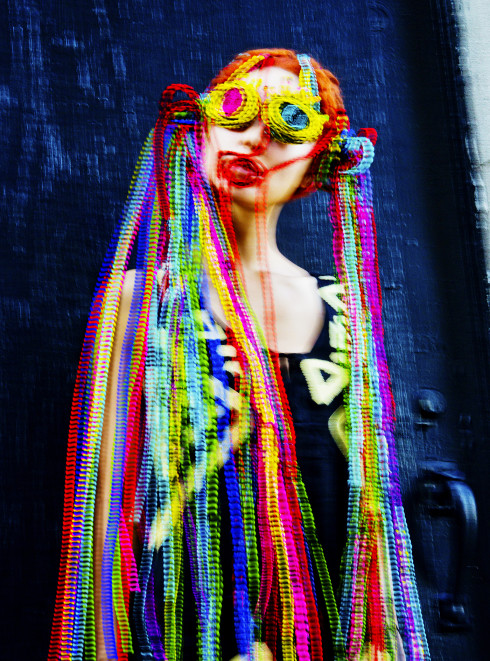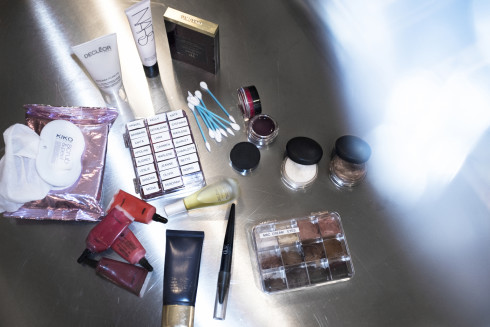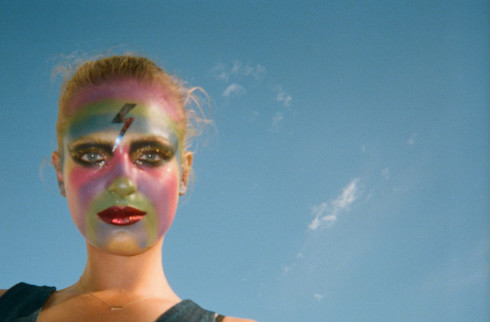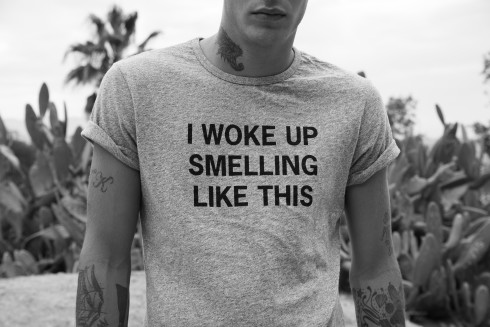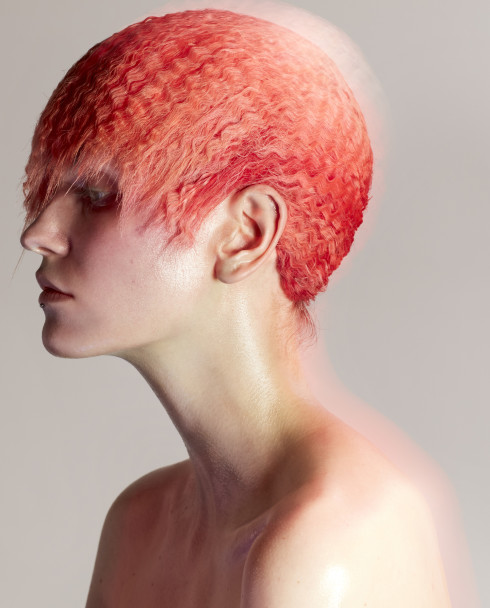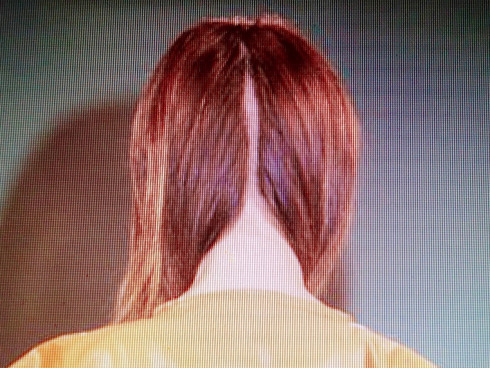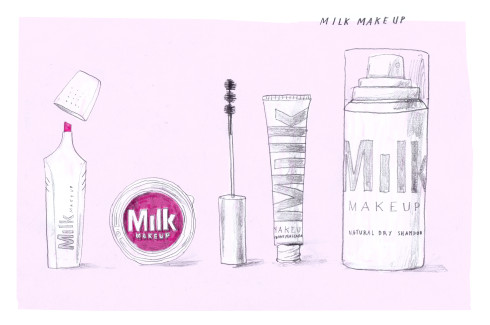
- By
- Micah Frenkiel
- Hair by
- Shay Ashual
- Photography by
- Jong Hyup
Photographer’s assistant: Yu Kim.
A DIFFERENT KIND OF BEAUTY: SHAY ASHUAL
Once upon a time, fibrous locks served a strictly evolutionary purpose. Our hair was there to cushion our craniums and insulate heat, far before transcending to cosmetic glory when we revised its primary function into a visual one through serums and sprays, mousses and masks, neon dyes, and ungodly levels of heat. Here, Shay Ashual, the New York-based hair- stylist and wig expert, brings us back to the origins, mounting one of his shockingly lifelike creations on a simple wooden stand and letting the soft caramel tendrils arrange themselves as they would naturally.
“My specialty is making wigs as real as they can be.” Ashual explains. “I wanted something as normal as possible.” In the world of celebrity hair, where Ashual maintains his impressive list of clientele including Karlie Kloss and Scarlett Johansson, the pursuit of normalcy is highly uncommon. Most of the fashion community strives to break free of convention with bold looks, having concluded that convention is synonymous to mediocrity. Ashual disproves this assumption. His work is elegant and intricate, embracing the structural integrity of his materials above all else: “It’s about the quality of the hair, which means as fine as possible and as real as possible.”
In creating a wig, Ashual focuses specifically on customizing the hairline to match his subject’s, while wigmakers tend to the rest of the scalp. This work demands immense focus, precision, and, as you might imagine, time. A single piece by Ashual requires between three to four months to create. “It’s a long-ass process,” he confirms.

It begins at the factory, where Ashual is tasked with selecting the optimum hair for the project at hand, evaluating a wide array of hair samples on their various visual and tactile properties—emphasis on the tactile. “I’m looking for a certain texture, something light and airy, baby fine,” he says. “It’s the difference between plastic and silk. I go for the silk.”
In order to craft a product this luxurious, Ashual opts for raw hair, meaning that the strands have never been colored or doctored. Raw hair also refers to the origin of the material—a human being, which begs the question, which human being? Why is this hair no longer in their possession?
“There’s a dark side to it.” Ashual explains, referring to the questionable processes by which the hair is often obtained. He mentions Indian temple hair, referring to Indian women who undertake pilgrimages to Hindu temples, committed to sacrificing their locks to beloved deities as compensation for an answered prayer. Controversy swirls around the supposedly consensual trade, as the women are frequently unaware that their donations will later be auctioned off, feeding a mercenary industry and thereby squandering the religious meaning behind the otherwise sacred gesture. While Ashual rarely works with Indian temple hair, the origins of his materials remain, for the most part, ambiguous. “It’s a big issue for me,” he concedes.
The murky ethics of wig-making are a rather modern discussion, prompted only by a recent massive growth in popularity. Ashual recounts the Nineties, when he had only recently started styling hair: “The word wig was a dirty word. The entertainment business used it, film used it, not fashion.” Over the course of the following decade, he observed as the stigma vanished, to be replaced by a craze as the world’s superstars began favoring custom-made wigs over the elaborate effort and damage that accompany a stage-ready updo. It was the practicality of the wig that birthed the trend, appealing to the masses with its ease and transience. “The shift was very quick because of the internet,” Ashual explains. “Because of social media, people began saying, ‘I can do that too.’”
When asked about the photograph he created with Jong Hyup, which Ashual calls “a bit like a passport photo,” he circles back to its ordinariness. “What I love about the final image is that it feels a little bit sinister,” he says. “It’s somebody’s really normal hair on a wooden block with no face.” Perhaps it’s this normalcy that aids him in fostering something eerie and powerful. The hair is uncontrived and minimally styled, hauntingly real and all too familiar as it hugs a cold, faceless surface. “It’s a good thing and a bad thing that I make wigs that are so realistic,” he says of the bittersweet reality of his success at replicating the everyday. “It’s a good thing, because I did the job. It’s a bad thing, because people are like, ‘What did you do?’ That’s the benefit of doing a good job. I don’t want people to know that I was there.”
- By
- Micah Frenkiel
- Hair by
- Shay Ashual
- Photography by
- Jong Hyup
Photographer’s assistant: Yu Kim.
